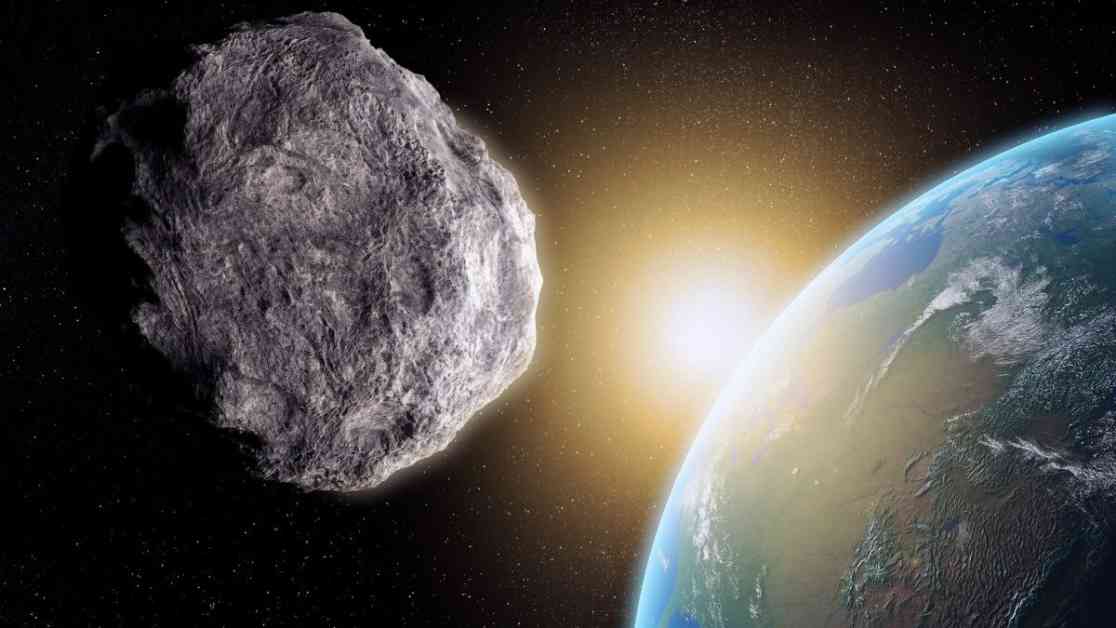Earth is set to welcome a rare celestial visitor this autumn in the form of a “second moon” phenomenon. Scientists have predicted that the event will last from this weekend until late November, with the possibility of the mini-moon making a return in the coming decades. Here’s everything you need to know about Earth’s unique mini-moon as it approaches our planet’s orbit.
### What is the ‘second moon’?
The celestial object being referred to as a second moon is actually an asteroid known as 2024 PT5. Discovered by NASA’s Asteroid Terrestrial-Impact Last Alert System (Atlas) in August last year, this asteroid belongs to the Arjuna asteroid belt, a group of space rocks that orbit the Sun. Scientists have calculated its trajectory in a study published in Research Notes of the American Astronomical Society.
When an asteroid comes relatively close to Earth, within 2.8 million miles, and moves at a slow speed of around 2,200mph, our planet’s gravitational field can exert enough influence to temporarily trap it. While there are over 1.1 million known asteroids in our solar system, with more than 30,000 classified as “Near Earth Objects,” the likelihood of one of them colliding with Earth is minimal.
This is not the first time Earth has had a mini-moon. Four years ago, scientists identified another mini-moon called 2020 CD3, which orbited Earth for over a year. Many more mini-moons are believed to have gone unnoticed, with some, like the asteroid 2022 NX1, even making repeat visits, passing by in 1981 and then again in 2022.
### How long will the asteroid be orbiting Earth?
2024 PT5 is expected to be captured by Earth’s gravitational pull on 29 September and will accompany the permanent Moon for approximately two months. According to Daniel Brown, an associate professor in astronomy at Nottingham Trent University, the mini-moon will orbit Earth for 57 days before eventually escaping the planet’s gravitational pull on 25 November. Brown explained that there is nothing dramatic happening to the asteroid for it to leave; it simply has too much energy to remain in Earth’s orbit for an extended period.
Despite its temporary stay, scientists predict that 2024 PT5 will be captured by Earth’s gravity once again in 2055, making a return visit to our planet. The cyclical nature of these mini-moons provides astronomers with valuable opportunities to study these celestial objects up close.
### Will it be possible to see the ‘second moon’?
Unfortunately, the asteroid 2024 PT5 will be too small and dim to be visible without the aid of a professional telescope. Measuring only 33 feet (10m) in length and composed of dull rock, the mini-moon will remain invisible to the naked eye. In comparison, Earth’s Moon has a diameter of approximately 3,474km.
Dr. Jenifer Millard, an astronomer and host of the Awesome Astronomy podcast, mentioned during the BBC’s Today program that professional telescopes will be able to capture stunning images of 2024 PT5. She noted that observers can expect to see captivating pictures online of the tiny dot moving past the stars at significant speeds, providing a unique and rare glimpse of this celestial event.
As Earth prepares to welcome its second moon this autumn, astronomers and space enthusiasts alike are eagerly anticipating the arrival of the mini-moon 2024 PT5. While it may not be visible to the naked eye, the scientific community is poised to capture valuable data and images of this celestial visitor as it orbits our planet temporarily. Stay tuned for more updates and information on this fascinating phenomenon as it unfolds in the coming weeks.













